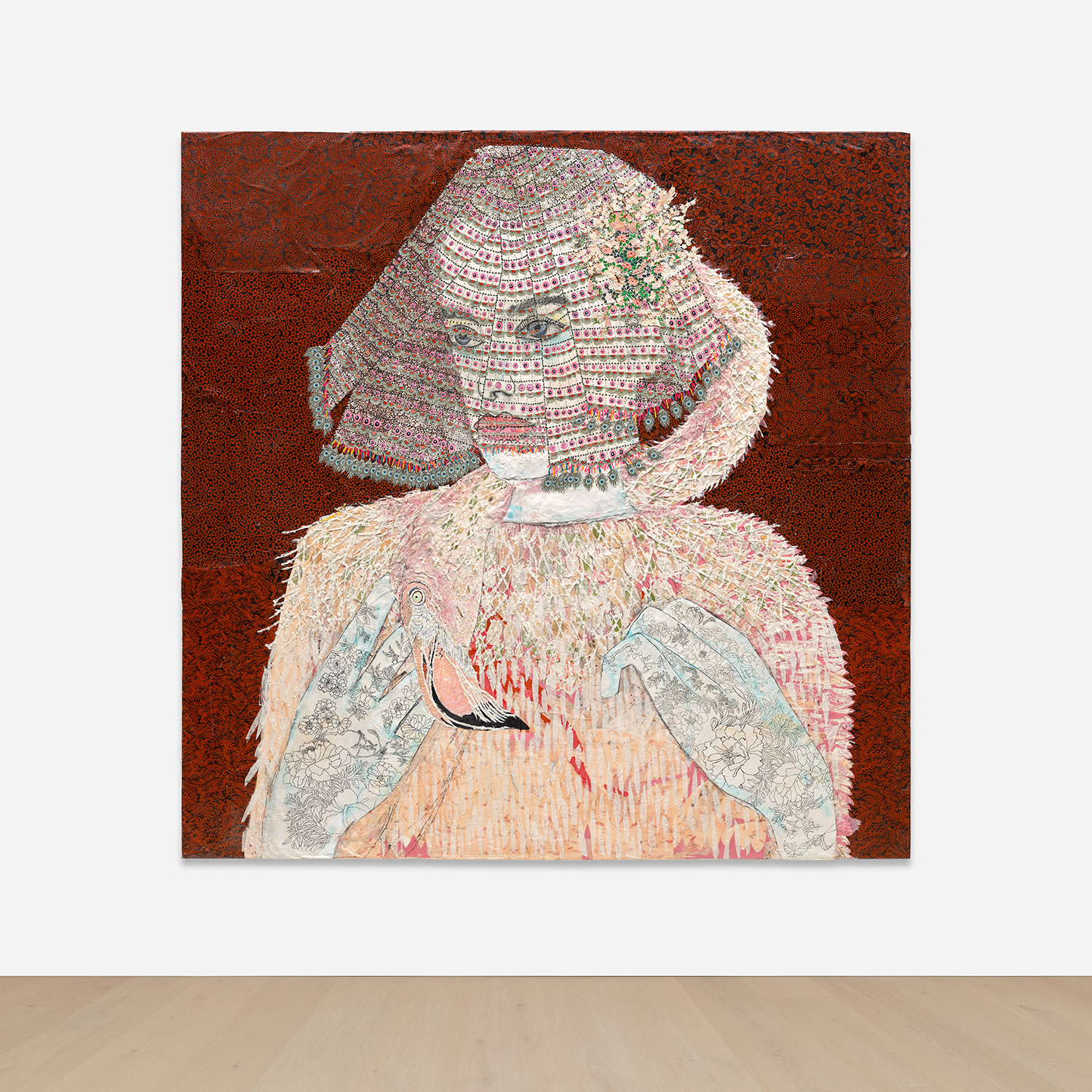



24
María Berrío
The Lovers 2
signed, titled and dated ““The lovers 2” María Berrío 2015” on the reverse
watercolor, Swarovski rhinestones and Japanese rice paper collage on canvas
72 x 71 7/8 in. (182.9 x 182.6 cm)
Executed in 2015.